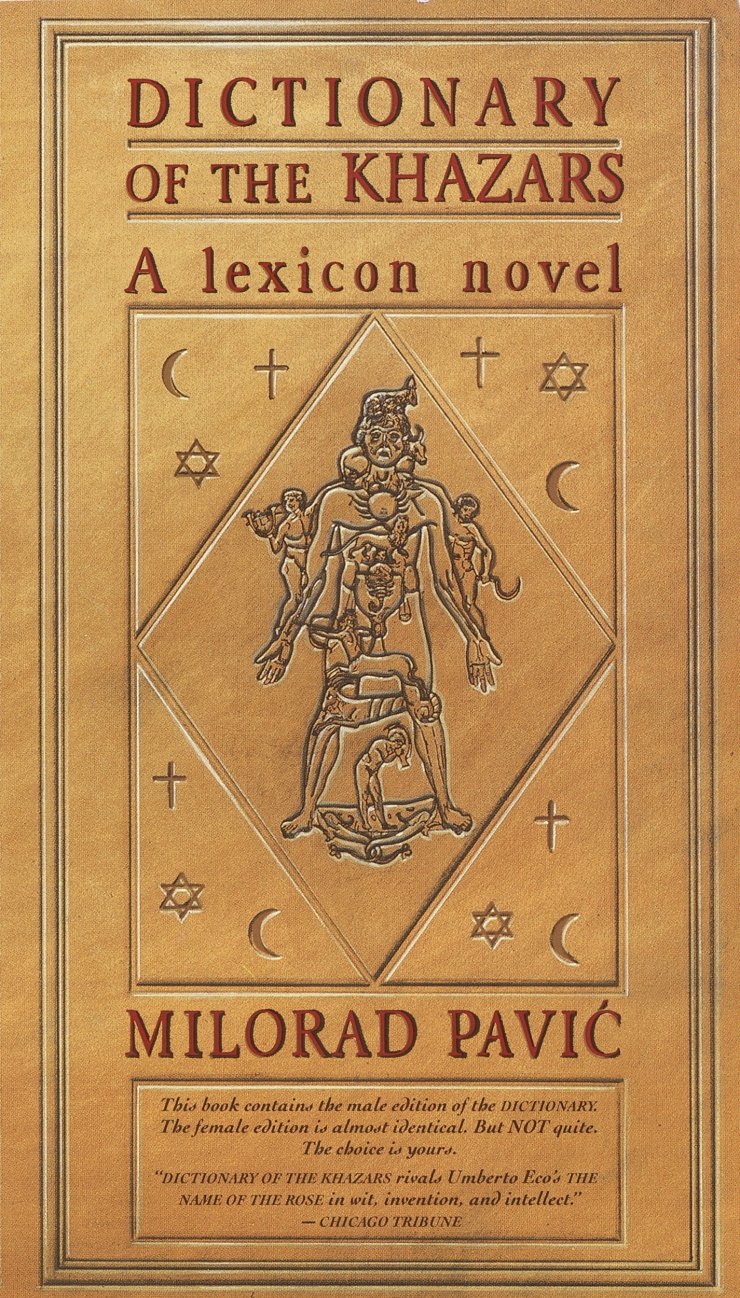
For several hundred years before the end of the first millennium, a people known as the Khazars ruled the land between the Caspian and Black seas. Of ancient stock, and inheritors of many now obscure and even unknowable rites, the Khazars fought wars amongst themselves and against their neighbors, struggled against cruel seasons and bitter landscapes, and eventually created a cabal of dream-hunting priests who sought to reconstitute the body of an angel whose sinews and veins were composed of stories…
Wait, what?
Written in 1982 by Milorad Pavić in the former Yugoslavia, DICTIONARY OF THE KHAZARS is one of the most difficult ‘interesting’ reads I’ve yet experienced. It goes through a lot of trouble to pass itself as a modern edition of a 17th century text, a book divided into 3 separate parts, each taking the perspective of the one of the major monotheistic traditions (Christianity, Islam and Judaism) on what it refers to as the ‘Khazar Question’. Pavić does a solid job of capturing the tone of a 17th century text…ie. lots and lots of details on battles, ancestry, traditions and and…yeah, for a long while it’s a pretty dry slog.
And then…things start getting strange. An entry on a royal marriage suddenly segues into describing the couple’s night in a haunted roman coliseum. Vampires, ghosts and demons start drifting into the narrative. The longer you read, the more you notice recurring patterns and characters…characters such as Princess Ateh, whose language and memory where stolen by the Devil so that she can never recall her poetry, and patterns such as each of the 3 parts claiming the Khazars were converted to one particular faith (surely they can’t ALL be right?). Biographies of the 3 writers of the dictionary are included, and each is a contorted melodrama of lost love, murder, war and supernatural intervention. And just what the HELL is up with that fragmented, 20th century narrative which keeps jumping into the dictionary, a story of 3 academics and their grimly intertwined fate?
Pavić, I believe, is recreating that experience, probably not alien to many academics, of having crawled through innumerable pages of research to the point where your eyes blur and your brain feels numb and oh my GOD where is my coffee and THEN…then you suddenly blunder into a description of, of SOMETHING, something that blows your damn mind, and brings a new perspective to life and how to live it. Miraculous images and scenes emerge from the rambling text like islands of shimmering light from a swamp, and stumbling onto them was, for me, a truly unique experience.
If you’re going to read this book, I’d recommend taking your time with it. Don’t approach it as a standard novel as it’s incredibly dense and, I think deliberately, at times exhausting to get through. Take it in pieces, here and there, a few chapters a week. Let it linger. I read this book by lamplight on an overnight bus trip, and the exhaustion and my struggling with the language and those WEIRD parts about a primordial being composed of all our sleeping thoughts and and…well, let’s say it was hallucinatory in the (mostly) best sense of the word.
The book rewards endurance and patience. For those willing to take a very difficult journey…well, this book will certainly be a TRIP. Me like books.
NOTE: Just to make things even odder, this book was published in two separate editions. One is ‘Male’, the other ‘Female’ and apparently they are identical save for one paragraph. I read the ‘Male’ version for, er…for whatever that’s worth. I’ll, uh…I’ll read the female version another day. Sure I will.